A Kingston Trio. Teo Audio Runa Loudspeakers; Teo Audio Liquid Pre passive preamplifier; Teo Audio Liquid Cables. Review by Tim Smith
Runa Loudspeakers: $19,000 USD
Liquid Pre passive preamplifier: $4,000 USD
Liquid Cables: from $1000 USD to $7,000 USD for a pair of 1.0 to 2.0 meter RCA interconnects, depending on model
http://www.teoaudio.com
Ken Hotte and Taras Kowalczyszyn are the two creative minds behind Teo Audio, based in Kingston, Ontario. Teo (pronounced Tay-O) is named after Taras’ father, Teodor. The company is known primarily for its liquid metal–yes liquid–cables. Who knew that a slurry of gallium, tin, and indium (a benign and safe mix of alloys used in children’s thermometers) could form the basis of world-class interconnects and speaker cables? Here’s the rare case when the words ‘revolutionary product’ are called for.
Teo Audio Runa loudspeakers with external crossovers. Teo Audio Liquid Pre passive preamplifier (silver) in middle of the rack on the far right, below Line Magnetic 518IA 845-based amplifier, with its preamp-in function. The pink foam is ‘earthquake’ foam used in building foundations in California. A wonderful resonance controlling device. Provided by Teo Audio.
Let’s begin with the product that announced Teo Audio to the world of audiophiles, the Liquid Cables. Without a doubt, these are the best cables I have had in the house. I am comparing them with Kimber Kable Silver Streak, Hero, PBJ and Tonik. I am also using Connex’s BL-Ag silver interconnects, products from Paul Speltz, DH-Labs, Neotech, and Audio Sensibility.
Build quality is top-shelf
The Pelican Briefcase
The Liquid Cables excel with bass. It was immediately noticeable. They delivered more of it and with more texture too. I revelled in the Jacques Loussier Trio’s Satie: Gymnopédies, Gnossiennes, a disc featuring the great bassist Benoit Dunoyer de Segonzac. I focused on the fifth track which contains several mini bass solos. I concentrated on the same passage where there is a twangy decaying bass note. I did it five times, first with the $1,000 Splash RCA interconnect and then with a $300 cable from Audio Sensibility, which is probably my best interconnect. I wished I had the ability to time how long the decay was present, but it seemed that the noise-reducing properties of the Liquid cable led to extended decays. You’ll have to decide if that sort of observation would pass peer review. Well don’t bother, because such a trial would be swatted away with an uproarious chorus of laughter by any testing agency. As Richard Cocciante and Diane Tell might say, ‘c’est un question de feeling.’
But I swear these cables hang onto notes longer than any other cable I have owned. Having said that you’ll only notice this in a very quiet environment, with no buzzing refrigerators and the like in operation. The affect of these cables is like going from a dirty RFI corrupted line to going off the grid, Red Wine Audio style. Blacks are blacker and quiet passages are quieter. There is a warmth to the music–or it is the lifting of a haze? Is it because the slurry eliminates skin effect and unfriendly impedances? Whatever it is, the result is more musical. Teo’s cables are instantly recognizable when inserted into my system. They are better than my current stock of cables but they are more expensive. If I were budgeting $1,000 or higher for interconnects however I would certainly consider buying these especially since I listen to the kind of music that will benefit most from the use of these cables: solo piano and guitar, vocals, music with quiet passages.
An embarrassment of riches
I noticed a small improvement jumping from the $1,000 Splash to the $2,200 Splash Reference, which contains more slurry and better connectors. But the jump to the 2 meter-long $7,000 S/S cable was dramatic. I found transients to be faster, bass to be even deeper, and highs extraordinarily sweet. Certainly this is the best interconnect I have listened to. The jump in sound quality from my Kimbers, Connex, and Audio Sensibility to the Teo Liquid Cables was not an enormous step but it’s large enough that I’m sold on it. If you are willing to spend $1,000+ for your interconnects, you should consider these. Everything at Teo Audio is made to order. At this moment, turnaround time for the cables and the Liquid Pre is typically one month. The speakers will take longer.
A word about pricing. The slurry of alloys used in the cables is very expensive and is imported from a Japanese company that supplies medical-grade material the world over. These are very labour-intensive cables to make. Above all, Taras must avoid getting bubbles in the tube. He had to be trained by medical personnel at Kingston General Hospital (in their off-time, of course) on how to avoid getting bubbles into the line. The Teflon tube containing the slurry is sheathed in a nylon braid. The tube is filled to capacity so gaps will never open up in the metallic slurry. Liquid Cables are hermetically sealed and they are topped off with the most robust terminations I have ever seen on interconnects.
The Teo Audio Runa loudspeaker is simply the best speaker I have had the pleasure to listen to for an extended period of time. It is easily twice as good as my cherished Harbeths. I think the Runa can compete with blingbox speakers costing three times as much. I had the Runa in my home for about five weeks. It reminded me of just how bad sounding most of the expensive speakers were at TAVES 2014. The Runa made me painfully aware of just how colored (in a pleasing way) are my Harbeths. It convinced me that sometimes you do get what you pay for. In this case, you’ll need $19,000 to gain what must be one of the least colored, most transparent windows onto the sound available today. ‘Transparent’ and ‘detailed’ are often euphemisms for bright and analytical. Not so with the Runas. You get detail galore without fatigue. Stunning levels of micro detail will emerge. Tight images free of smearing will be thrown at you and you will feel the thrust of notes. These are sensational speakers.
This might have something to do with the materials used for the enclosure. Ever heard a piano or clarinet made from aluminum? A cello or a harp? Me neither. MDF may not be sexy but a mix of pulped wood and epoxy gets closer to live music, for me at least, than over-engineered, 500 pound aluminum speakers. ‘Aircraft-grade’ aluminum employed in high end audio, you say? Well, you are aurally bankrupt. Your role is played out. Go where you ought to go, into the dustbin of history.
There is no need to use aluminum to create a stable, resonance-free enclosure. MDF will do just fine if one takes the time to fine tune dimensions. No ‘revolutionary’ inventions are necessary; well-designed conventional enclosures can sound just as good or better than 500 pound behemoths made heavy for the sake of being heavy (an attribute much admired by many reviewers).
Teo Audio has gone to great lengths to ensure that the box is virtually resonance free. When Taras K. brought the speakers over to my house he did a little tap test. With my system turned on but with no music playing he tapped gently on the woofers of my Tekton Design M-Lores. A loud sound emerged. He did the same to the Runa’s top-shelf Morel drivers. Dead silence. The Teo Runa grabs the note with a python grip, and then lets go quickly and precisely, because the box does not resonate. “It’s not how fast it [the driver] gets there, it’s how fast it lets go [of the note],” says Taras K. I couldn’t agree more.
Imagine how good these speakers would look in a nicely furnished room. The Runa is connected to its external crossovers via Speakon cables.
Played through the Runas and using the Teo Audio Liquid Pre, Charlie Haden and Pat Metheny’s Beyond the Missouri Sky has never been so clear and present. This is a disc I fell in love with back in 2003 when I was away for work for a couple of weeks, alone together in an apartment with a small collection of music at hand, two years before I joined the iPod generation. I have probably played that disc 100 times in the last decade. I thought I had heard every little nuance. Little did I know, but there were dozens of hidden aural gems to be found, if one possessed equipment equal to the task.
And one need not possess my Jamie Summers-like ear to notice. Cliché alert! My wife also loves the Haden/Metheny disc. She came into the listening room saying something like: ‘Wow, that sounds amazing. I’ve never heard it like that before. How much do these cost? (Answer: ‘You don’t want to know’). ‘Are you going to buy them?’ (‘I wish.’) My wife continued: ‘It’s so clear and detailed. The guitar sounds so much more complex than it normally does.’ Indeed, she nailed it. It’s the difference between a black and white photocopy of a relief map and a colored 3D hologram.
I love my Harbeths and Tektons but compared with the Teo Runas, they seem veiled–albeit in a most delightful way. If my Compact 7s and M-Lores are like a blurred ultrasound image; the Runas are like the view through an electron microscope. These speakers literally lift the veil and speak the truth, the whole truth, and nothing but the truth. The Liquid Pre passive preamp has the same effect on my system.
I could find no fault with the Runas nor with the Liquid Pre. They did bass perfectly—fast, grippy, dry, with no wooliness, no bloat whatsoever. Razor-sharp and realistic imaging. Vocals and bass images tended to be easily situated in the back center of the soundstage. There was never any smearing or muddiness; it was always crystal clear. The soundstage seemed well anchored and realistic–not too big, not too small. There was never the feeling that the music I was playing was being reproduced in a doped-up manner. Generally speaking, the Runas disappear, creating a moderately large, realistic soundstage. The Runas rendered highs with breathtaking precision.
Many of us will have the opportunity to get excellent bass through a well designed floor stander for under $5000. Or we might enlist the help of a good subwoofer like REL or Velodyne. It takes a whole lot of spending money to scale the heights of the high frequencies—highs of this sort don’t come cheaply.
Could the external crossovers be partly responsible for the amazing amount of micro-detail? The speakers are placed on Teo’s prototype spun- aluminum candy-floss material. Teo has paired with MBL at audio shows to demonstrate, in prototype form, equipment racks with this inert, resonance-killing material. Let’s hope this prototype goes to market soon!
I wonder if the external crossovers play a part in this. “Why the external crossovers? I asked.” “Noise control” said Taras K. without hesitating. The crossover box is made with MDF dressed up in an attractive aluminum paint. As with all things Teo, it has super damping qualities. The Runas use Morel drivers namely two 4-inch MV113s and one Morel DT33 tweeter per speaker. The enclosure is made of standard grade MDF. Teo uses Cardas copper posts.
Open your minds! He is like a bad SNL skit from the late 70s. Can’t get enough!
I have never had such a realistic rendition of cello in my listening room. The timbre of Maestro Rostro’s majestic instrument is ravishingly realistic. Jim Hall’s guitar is piercing but in a sweet and propulsive way, if that makes sense. The bite is sharp but the overtones are fleshed out thoroughly too. It’s simply the best of both worlds–detail, drive, with sweetness. Iron fist, velvet glove.
Built like a tank, rock-solid with no vibrations when you tap the top. And serious eye candy to boot.
And now we conclude with the Teo Liquid Pre. Think of it as $4,000 of the clearest, cleanest Fiji water ever bottled. And drink up for 40 years. Or longer. After all, what can go wrong with a passive? Hand it down to your children and have them replace the caps. This wonderful little preamp is made with NOS volume pots of the mil spec sort, rebuilt and sprinkled with Ken Hotte’s gold dust. As with the Runas, the Teo Liquid pre’s box has no resonances. To the tap, it seems totally inert. Teo says they are “big believers in mechanical inertness so that you don’t get that out of phase feedback from mechanical vibrations.”
Passive preamps are either loved or loathed. I loved this one even though I’m a sucker for sweet, euphonic tube sound. With the Teo hooked up to my Wyred4Sound SX-1000 monos, there was absolutely no noise coming from the tweeters. Inserting the Liquid Pre into my ‘reference’ system including my Harbeth Compact 7s made me realize how corn-fed and fuelled up is my ARC LS17. So, yes, as with almost all passives I have heard, don’t expect that doped-up hi fi sound with ground-shaking bass. There is no artificial boosting or favouring of one frequency over another. This preamp may just be the single greatest noise eliminator machine I have ever encountered. That got me thinking the way I am wont to do–naturally I spun The Cult’s “Love Removal Machine.” Geepers, Ian, that’s the product of a weird mind. But what wonderfully demented singing and deft guitar work! And it’s precisely the little reverbs, the overtones that the Pre captures so well. Jiminy Cricket, how I wish I had heard this preamp before I invested so much money in other brands.
In sum, the cables transformed bass in my basement. The preamp and speakers shone the light into my mole hole of a man cave, allowing me to see clearly for the first time. Teo Audio is making cutting-edge world-class products. Highly recommended.


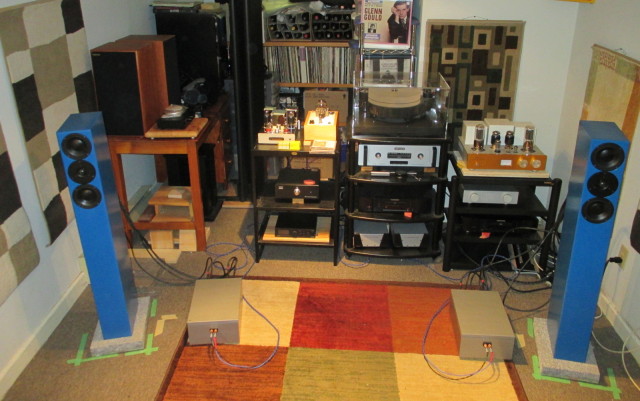
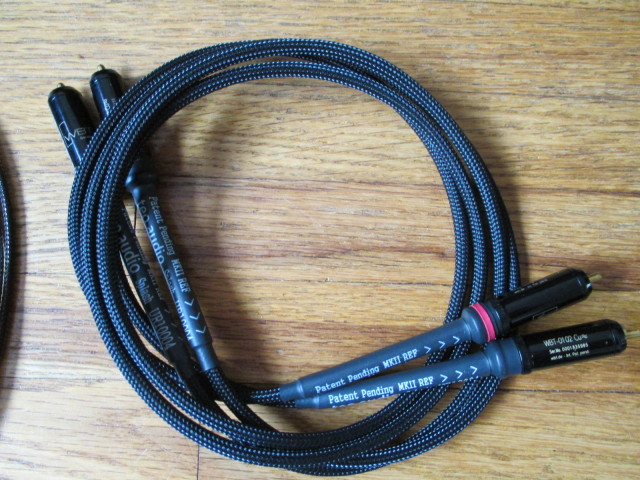
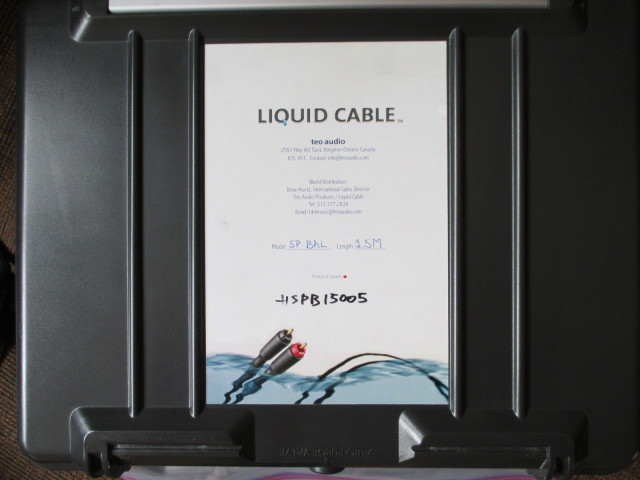
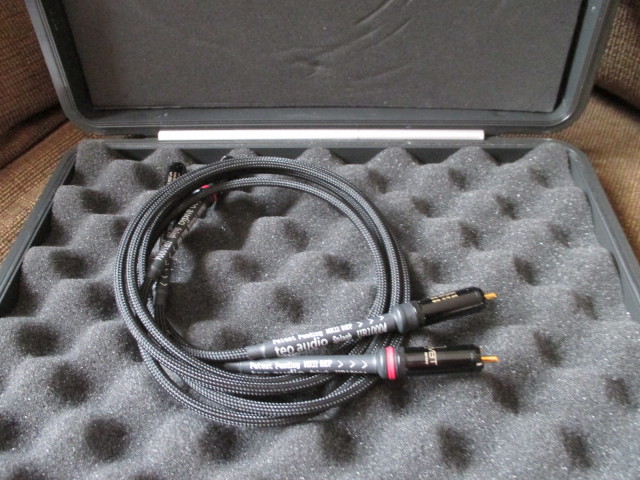
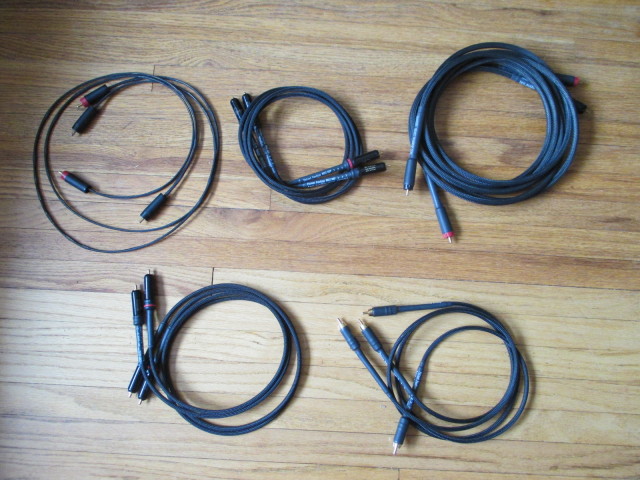
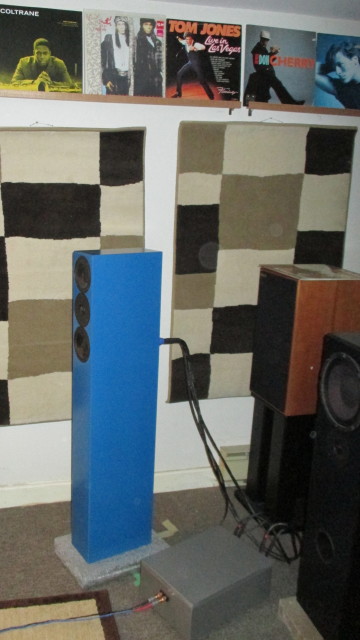



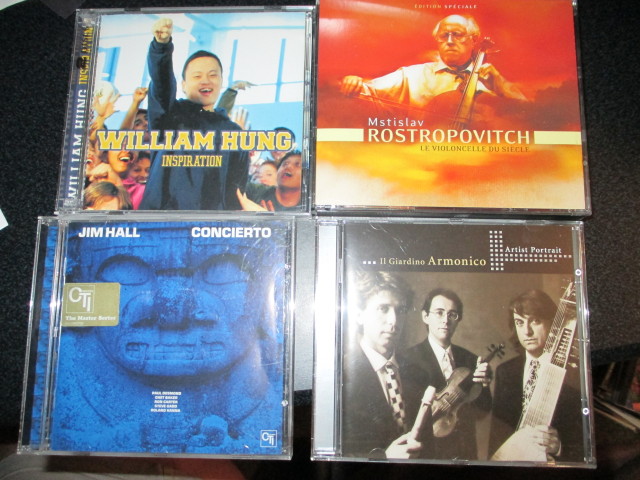
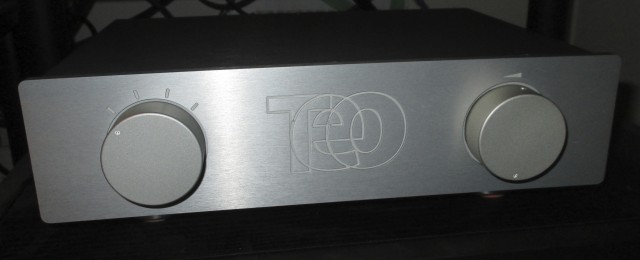
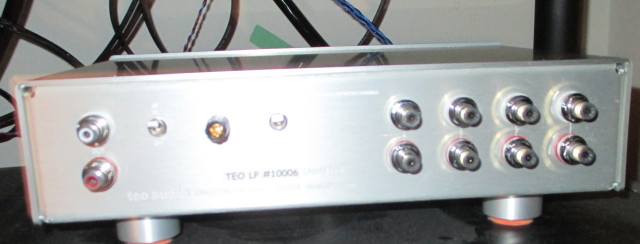

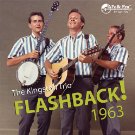

Perhaps it would be a awesome idea to do a follow-up on the latest TEO cables from the new Game Changer IC up to their newer mark 111’s to show if any progression has happened. Also would love to see you review my fav Audio Sensibility silver signature. Both Canuk cables.